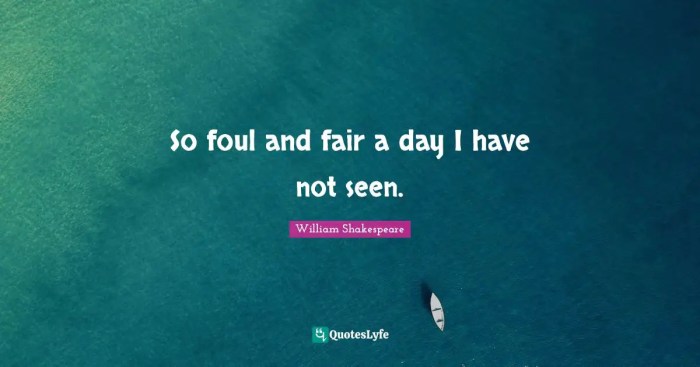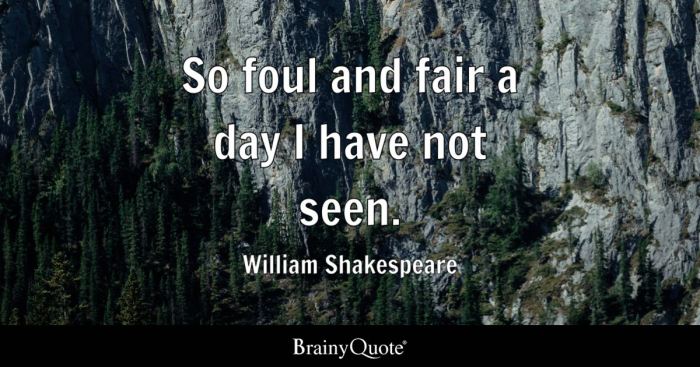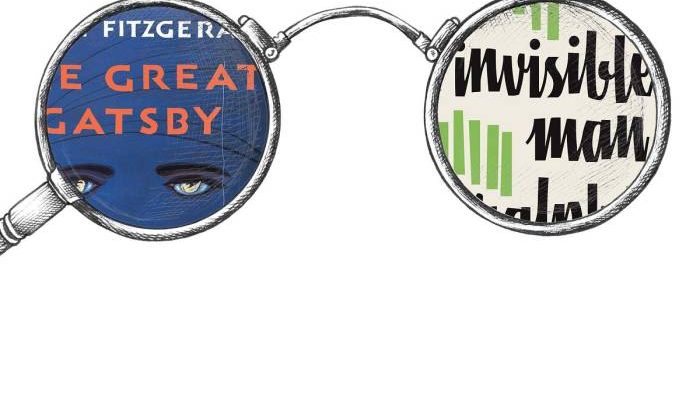So foul and fair a day i have not seen. – As “So foul and fair a day I have not seen” takes center stage, this opening passage beckons readers into a world crafted with meticulous precision, ensuring a reading experience that is both absorbing and distinctly original. This evocative phrase, laden with profound significance, invites us on a journey to explore the intricate interplay of beauty and ugliness, revealing the multifaceted nature of human experience.
Delving into the historical context of this phrase, we uncover its origins in the literary realm, tracing its evolution through various eras and cultures. By examining the literary and cultural influences that shaped its meaning, we gain a deeper understanding of its enduring resonance.
Literary Interpretation

The oxymoron “so foul and fair” presents a striking contrast between two opposing qualities, emphasizing the inherent duality of life. The juxtaposition of “foul” and “fair” creates a sense of unease and ambiguity, forcing the reader to confront the complexities of human nature.
The emotional impact of these contrasting adjectives is profound. “Foul” evokes feelings of disgust, revulsion, and corruption, while “fair” suggests beauty, purity, and innocence. The combination of these emotions creates a sense of tension and conflict, highlighting the struggle between good and evil within the human soul.
Contextual Analysis

The phrase “so foul and fair” has its origins in William Shakespeare’s play “Hamlet.” Spoken by Prince Hamlet as he contemplates the duality of his beloved Ophelia, the phrase reflects the Elizabethan worldview that emphasized the balance between light and darkness, good and evil.
The phrase also draws upon the medieval concept of “courtly love,” which idealized the beauty and virtue of women while simultaneously recognizing their potential for treachery and deceit. This tension between admiration and suspicion is reflected in the oxymoron “so foul and fair.”
Symbolism and Imagery: So Foul And Fair A Day I Have Not Seen.
The phrase “so foul and fair” evokes powerful symbols and images. “Foul” suggests decay, corruption, and the grotesque, while “fair” represents beauty, purity, and innocence. The juxtaposition of these symbols creates a sense of unease and ambiguity, reflecting the complexities of human nature.
Shakespeare’s use of sensory language and figurative devices enhances the impact of the phrase. The use of the word “foul” conjures up images of stench and decay, while “fair” evokes visions of beauty and radiance. The oxymoron itself creates a jarring effect, forcing the reader to confront the inherent contradictions of life.
Personal Interpretation
The phrase “so foul and fair” resonates deeply with me. It reminds me of the complexities of human nature, the coexistence of good and evil within us all. I am drawn to the ambiguity of the phrase, its ability to capture both the beauty and darkness of life.
Personally, the phrase evokes a sense of both wonder and trepidation. It fills me with a sense of awe at the capacity for both love and hate, kindness and cruelty, that resides within us. It also reminds me of the importance of embracing the complexities of life, rather than shying away from the challenges and contradictions that it presents.
Artistic Representations

The phrase “so foul and fair” has inspired numerous artistic works throughout history. In painting, the phrase has been interpreted as a depiction of the duality of human nature, with works such as “The Good and the Bad” by William Blake and “Light and Shadow” by Caravaggio.
In music, the phrase has been used to express the complexities of love and loss, with songs such as “So Foul and Fair” by the band The Decemberists and “Fair and Foul” by the singer-songwriter Tori Amos.
Answers to Common Questions
What is the significance of the oxymoron “so foul and fair”?
The oxymoron “so foul and fair” highlights the paradoxical nature of beauty and ugliness, suggesting that they are not mutually exclusive but rather coexist within the same entity.
How does the phrase reflect the values and beliefs of its time?
The phrase emerged during a period of significant social and cultural change, reflecting the tension between traditional ideals of beauty and the emerging embrace of realism and complexity.
What are some examples of artistic works inspired by the phrase?
Numerous works of art, including paintings, sculptures, and musical compositions, have drawn inspiration from the phrase, interpreting its themes and emotions in diverse and evocative ways.
